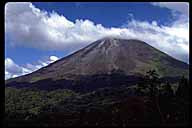
The Components and Proper Implementation of Problem-Based Learning

Understanding
Problem-Based
Learning
![]()
Problem-Based
Learning Pyramid
Lesson Outline

Proper
Implementation
of aProblem
-Based curriculum
Have you ever considered discontinuing the dry monotony of everyday curriculum but have no idea where to begin looking?
Perhaps some insight into a fairly new concept known as Problem-Based Learning can be help revitalize and enrich lessons already set in place. Questions you may be asking yourself are, what is Problem-Based Learning (PBL) and how can I integrate it into my curricula? If these questions are similar to yours, you may have found the perfect place to begin your journey.
So...What is PBL?
PBL is merely a element of the constructivist theory. The Constructivist Theory is a theoretical framework based on cognitive study designed by Jerome Bruner. He states that “ learning is an active process in which students construct new ideas or concepts based on their current knowledge” (“The Psi Café,” n.d.). PBL follows this idea and entails four major components: real world application, teacher as the facilitator, student centered activities, and the promotion of higher order thinking. A Chart is as follows:

Real world application brings fourth relevance to the subject matter. The instructor implements meaningful lessons in order to allow students to feel empathy and create ties for more thorough comprehension. These lessons involve performance such as that found in the real world. According to Math Star NM the tasks “fill a genuine need for the students and result in a tangible end product.” In order to properly stimulate a task, students should be required to solve problems reflected by the real-world such as “developing a business plan, making decisions about land use, and designing and producing a program for the school play” (Villa, 2005)
Example:
Business and community leaders in the city of Tacoma, Washington wish to build a new middle school to accommodate and encourage the local population explosion. Geological surveys show that the proposed middle school site is dangerously close to Mount Rainier, a volcano that shows signs of awakening. City officials need to know the positive and negative effects of building this school in order to decide whether to build the school or not (ETE 2004). Should the city build the school on the hillside of Mt. Rainier? What are the reasons for your group’s decision? If the city decides to build the school, what precautions can the school take to ensure safety? For the rest of the lesson |click here|
Reference
Villa, J. (2005). Math Star NM, Engaging Questions Authentic/Real World Based. Retrieved
July18, 2005, from http://mathstar.nmsu.edu/exploration1/PBLs2_awb.html.

For more information e-mail me at:
mnlozano28@yahoo.com




